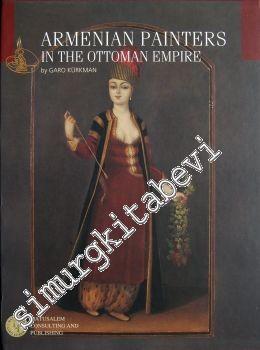
After years of work and research, my first book, Ottoman Silver Marks, was published in 1996. In this book I endeavored to include all the known marks and stamps, including the tuğras or monograms of the sultans struck by state assay offices on silver and silver objects from the beginning of the Ottoman Empire. In the course of this study I encountered the names of many silversmiths who produced silverware in Anatolia and stamped these objects with marks indicating the fineness of the silver they contained and the town or city where they were made, as well as their own names. I included the names of these craftsmen and photographs of same of the beautiful objects which they had made.
My second book, Anatolian Weights and Measures, published in 2003, treated a related and similarly neglected subject. With the financial support and encouragement of the Mediterranean Civilizations Research Institute established by Suna and İnan Kıraç, this book traced the story of weights and measures used in Anatolia over the centuries, with illustrations of many examples.
This third book is about Armenian painters of the Ottoman period. In publications about Ottoman and Turkish painters it is assumed that western style painting began with the establishment of the Academy of Fine Arts, and that earlier painting was confined to folk art and naive paintings on coffee house walls. Yet we find that for a very long time works by many painters had adorned imperial palaces and homes of eminent historical personages and that these had aroused interest in foreign countries and museums.
I therefore tackled a subject which had not been adequately researched before, and endeavored to compile biographies of artists born in the Ottoman Empire between 1600 and 1923, many of whom had been lost in the obscurity of history, and to seek out their works and signatures. If I have been able to perform a public service by means of this study, I will be more than satisfied. The artists are arranged in alphabetical order. The signatures on those paintings which we had access to be written in three different alphabets; sometimes Armenian...
After years of work and research, my first book, Ottoman Silver Marks, was published in 1996. In this book I endeavored to include all the known marks and stamps, including the tuğras or monograms of the sultans struck by state assay offices on silver and silver objects from the beginning of the Ottoman Empire. In the course of this study I encountered the names of many silversmiths who produced silverware in Anatolia and stamped these objects with marks indicating the fineness of the silver they contained and the town or city where they were made, as well as their own names. I included the names of these craftsmen and photographs of same of the beautiful objects which they had made.
My second book, Anatolian Weights and Measures, published in 2003, treated a related and similarly neglected subject. With the financial support and encouragement of the Mediterranean Civilizations Research Institute established by Suna and İnan Kıraç, this book traced the story of weights and measures used in Anatolia over the centuries, with illustrations of many examples.
This third book is about Armenian painters of the Ottoman period. In publications about Ottoman and Turkish painters it is assumed that western style painting began with the establishment of the Academy of Fine Arts, and that earlier painting was confined to folk art and naive paintings on coffee house walls. Yet we find that for a very long time works by many painters had adorned imperial palaces and homes of eminent historical personages and that these had aroused interest in foreign countries and museums.
I therefore tackled a subject which had not been adequately researched before, and endeavored to compile biographies of artists born in the Ottoman Empire between 1600 and 1923, many of whom had been lost in the obscurity of history, and to seek out their works and signatures. If I have been able to perform a public service by means of this study, I will be more than satisfied. The artists are arranged in alphabetical order. The signatures on those paintings which we had access to be written in three different alphabets; sometimes Armenian...


















